Or at least, it had been, for about three days solid I believe. While I wasn’t a fan of how often it rained in central New York, this weird North Carolina pattern of weeks of drought and then days of rain is unbalanced and not the best for the plants, but at least we have the rain barrels to try and even things out.
But while it was wet, I took a little time to use the conditions.
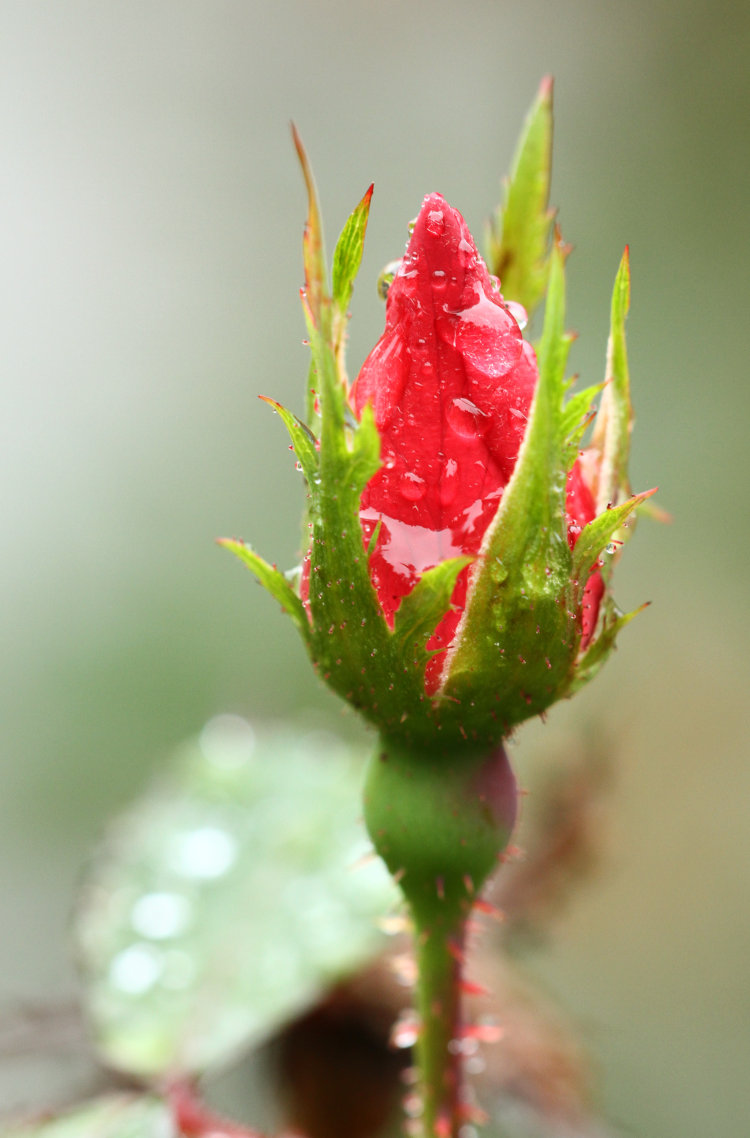
There are several rose bushes along the front of Stately Walkabout Manor, and while their blooms often don’t get too photogenic for some reason, this bud jumped out, helped by the raindrop-laden leaf in the background. It was actively raining as I took this, albeit lightly, but it limited the amount of time I’d spend in the open with the camera.
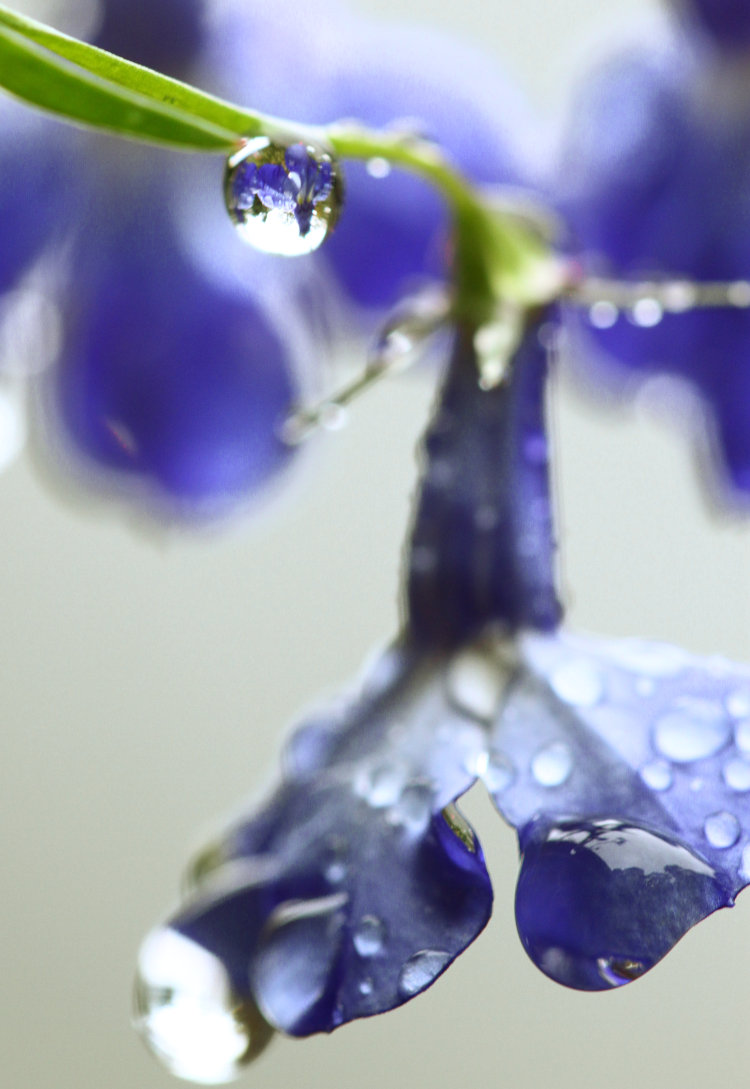
The same conditions held for the blue lobelia (Lobelia erinus) hanging from the front porch, though I could get under the overhang for some perspectives, just not all of them. The goal here, of course, was to use that nice round raindrop as a lens, which worked okay, but not ideally. The range of sharp focus is devastatingly small, in the realm of millimeters, and working freehand like I was, this required standing absolutely rock-steady without moving a hair from position – something that I actually cannot do. So instead this meant timing the trip of the shutter to right when I wobbled into sharp focus, and as you can imagine, I have a lot of misses.
So I got a smidgen smarter, and once it had halted raining for a bit, returned with the flash unit instead of using the dim available light to try again.
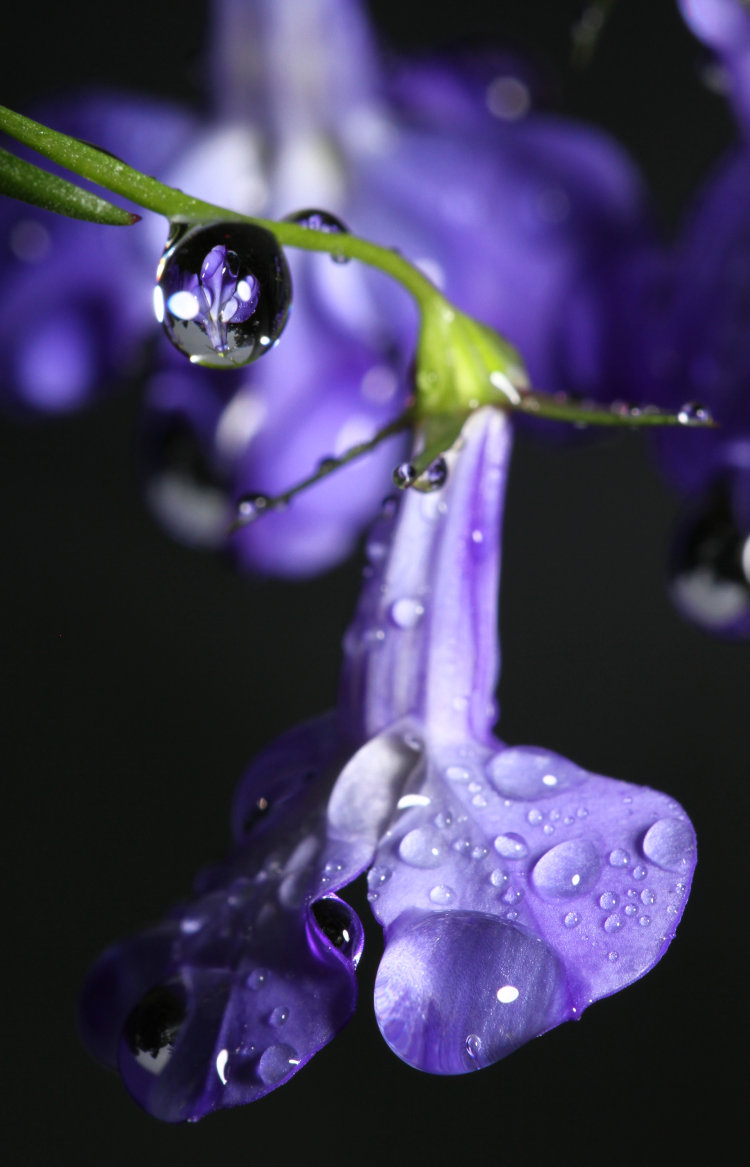
That’s a bit better, even when it dropped the background into darkness, but it did this because with the flash, I could stop down to f14 and improve the depth of field, which also gave me a slight edge on my wobbliness. Unfortunately, the softbox shows up a little too distinctly in the raindrops, especially the lensing one, as big white circles (but at least they’re circles and not some unnatural-looking shapes like rectangles or octagons or something.) Note, too, that these colors have been tweaked more to the natural hue, since the camera cannot actually capture the blue of the flowers.
[There’s a small mistake here as well, not really visible because I cropped slightly: I’d inadvertently bumped the camera controls and this was shot at 1/400 second instead of 1/200. Unfortunately, the flash does not synchronize properly at 1/400 because the shutter is not open fully when the flash goes off, so part of the frame goes dark – unless you’re using a synchronized ‘focal plane’ setting, which this flash doesn’t even have. Best to always keep flash pics under 1/200 second shutter speed.]
The rosemary hanging from the opposite side also got the treatment.
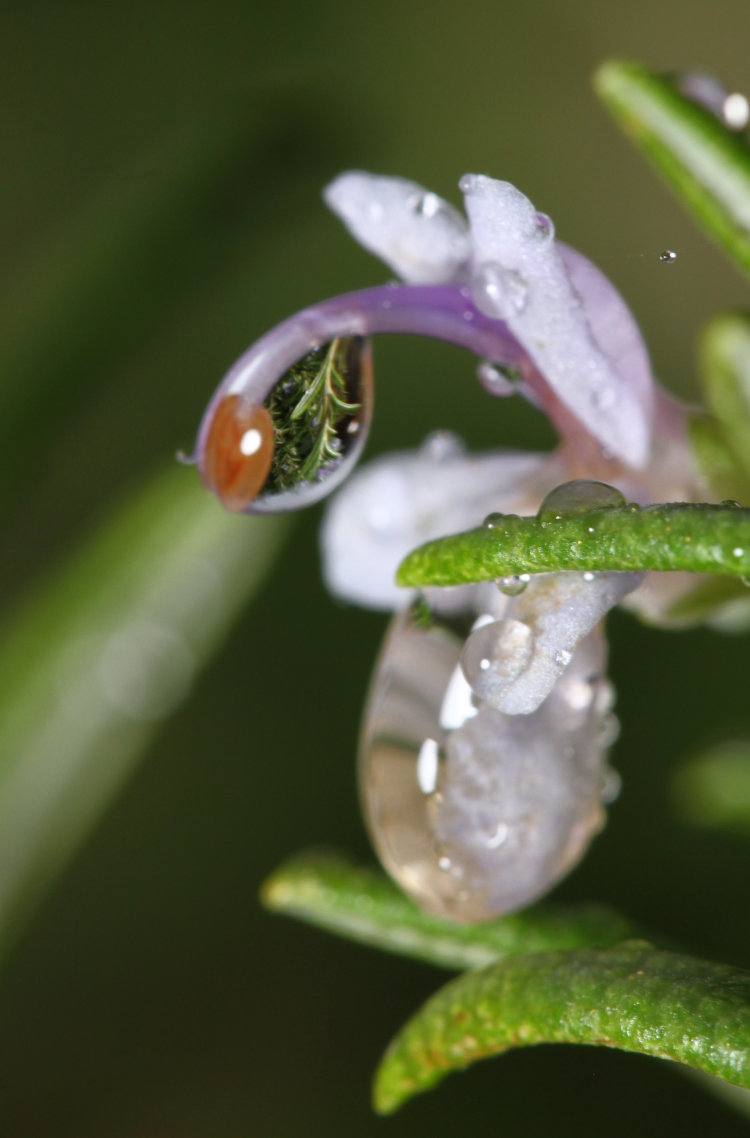
This time, I got lucky enough that I could frame a sprig of rosemary within the drop, providing more context for what the plant actually is.
By the way, you may see this technique with prominent flower blossoms centered perfectly in good light within the drops, and bear in mind that there’s a significant chance that they’re carefully staged photos. Using a drop as a lens requires a subject that’s a specific distance and position behind the drop, lit well of course (not usually the case when the raindrops are still present,) and naturally not a dead or lopsided or otherwise unphotogenic bloom. Notice what I said up there about the roses? It’s actually challenging to find flowers (and leaves) that look as pristine as we want them to, without even trying to find a drop in front of them that’s in the perfect position. This is not sour grapes, and I’m sure some of the photos are ‘as found’ – I’m just relaying my experience in pursuing such subjects, and there’s a lot more to it than it seems.
One more from the lobelia, when I returned much later on at night while it was misting heavily.
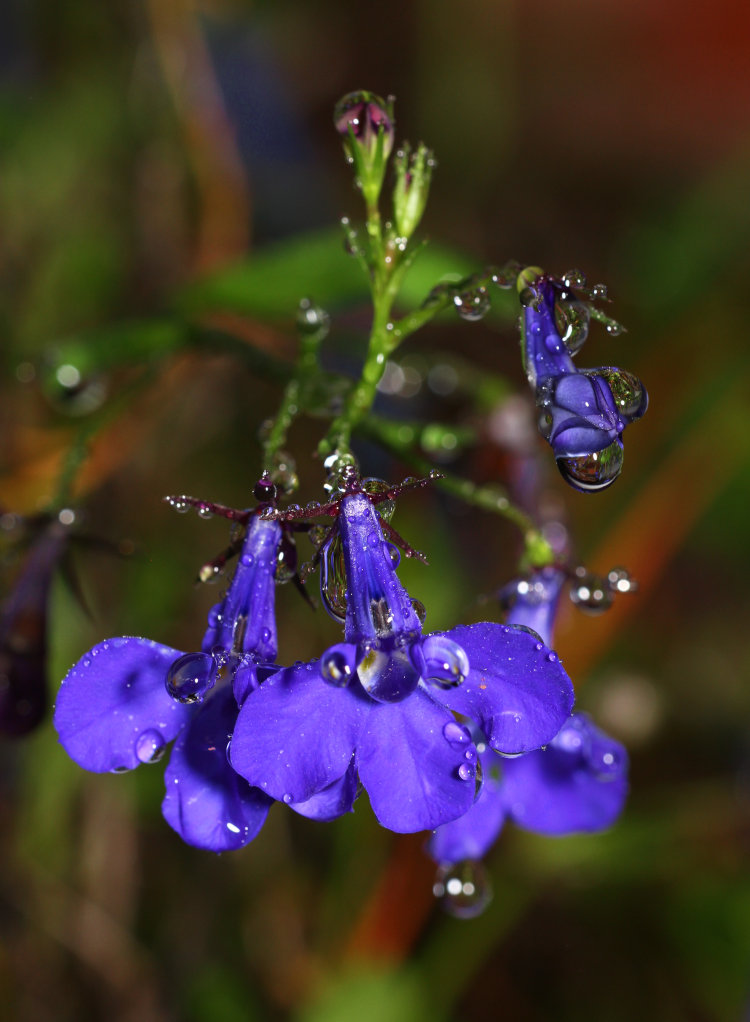
No lensing this time, but better light overall – since I’d backed off for better framing (this with the Sigma 180mm macro,) the light from the softbox went wider but also dropped off, so the aperture was instead at f10. The myriad drops got very well-defined and it even looks almost like direct sunlight, so I’m pleased with it. And I got something in conditions that normally limit nature photography, too.



















































